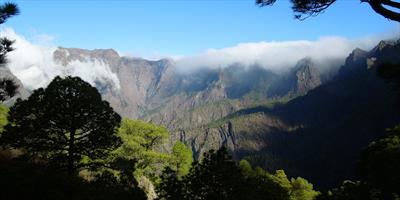Which Canary Island to visit? Which is best if you have never been to any? Which has the best beaches? Best weather? Which is best for families / for nightlife / for surfing / for walking… This page answers the most common questions and tries to pick the best islands for the particular purpose or category. It is not always an easy task to be honest, as all of them have plenty to offer, have strengths and weaknesses, and most importantly, the differences (e.g. in weather or landscape) between locations on the same island can be much greater than differences between islands.
Transport Access: Narrowing It Down to 4 Islands
Canary Islands consist of seven big islands – Tenerife, Gran Canaria, Lanzarote, Fuerteventura, La Palma, La Gomera and El Hierro – plus several small ones which we don’t consider, as they are either uninhabited or very close to a bigger island.
Out of the seven big islands, only four have generally good transport connections (frequent and affordable flights from Europe) and developed tourist infrastructure: Tenerife, Gran Canaria, Lanzarote and Fuerteventura (with La Palma gradually catching up, but nowhere close to the others yet).
Don’t get me wrong, it is perfectly possible to find flights and hotels and restaurants and water attractions on the smaller islands, but they are generally less available and/or more expensive. If you are reading this page, chance is you have not visited any (or most) of the big islands yet, so I suggest to start with one of those and leave the smaller ones for a next visit.
Now you may be thinking: But I don’t want the mass tourism / overcrowded beaches / loud resorts / English breakfast and football kind of place. Don’t worry. Even on the biggest and most popular islands you can find many remote places, beaches or trails where you’ll hardly meet another person the whole day and surprisingly, such places can often be found just a few minutes’ car or bus ride from the busy resorts.
OK, so we have Tenerife, Gran Canaria, Lanzarote and Fuerteventura. Now let’s look at the two most frequently asked criteria: best weather and best beaches.
Which Canary Island Has the Best Weather?
Which island is the hottest? Which gets the most sunshine? How about wind? Does is rain there at all?
Differences in temperature and weather in general are much bigger between different parts of the same island than between whole islands. The simple rule is that south or southeast is often warmer and less cloudy than the north or northwest due to the prevailing wind direction (from the west) and high mountains stopping the clouds.
Some of the warmest and sunniest locations of the entire Canaries are the south of Tenerife and the south of Gran Canaria – no wonder that the biggest and most popular tourist resorts are located here.
Wind can be a huge factor. There are some parts on each island which get much more wind than others. Fuerteventura and Lanzarote can be considered the windiest islands overall, as they have the smallest mountains.
It does rain at times (mostly October to April; summers are almost completely dry). Fuerteventura, Lanzarote and the south or southeast coasts of Tenerife and Gran Canaria are the driest. The north of Tenerife gets the most rain. Most of the rain falls at higher altitudes (1,000 metres and slightly above), as the clouds usually hit the islands here – the lush forests are an evidence.
For more detailed explanation of the weather patterns and differences between islands and locations see this page.
Which Canary Island Has the Best Beaches?
The short answer is that Fuerteventura is often considered the one with best beaches and it certainly is when measuring hard facts. On Fuerteventura you can find by far the longest and widest beaches in the Canaries. If beaches and long beach walks are the one and only thing you want from your holiday, you won’t be disappointed in Fuerteventura – if you choose the right locations on that island.
With the above said, Fuerteventura is not the only one with beautiful beaches. Although on the other islands you won’t find beaches as long or wide as the biggest ones in Fuerteventura, there are numerous stunningly beautiful beaches in Gran Canaria (like the one with the dunes in Maspalomas), Tenerife or Lanzarote. The key is always to choose the right place on that particular islands – admittedly some resorts have much better beaches than others.
For more detailed discussion of the best Canary Islands beach locations and other useful things to know (such as black sand vs. white sand, wind, safety etc.) see this page.
Best Places on Individual Islands
In sum, there is no “best” Canary Island. All the islands are so diverse that different parts of the same island will provide totally different holiday experiences. It is worth doing some research before you choose the right location. If you already have one or two islands which you are perhaps more curious about, you can find a more detailed overview of different areas and their strengths and weaknesses below:
